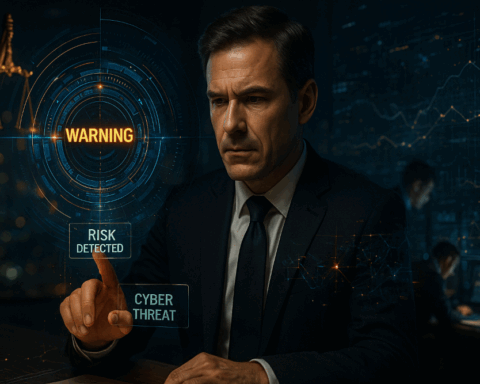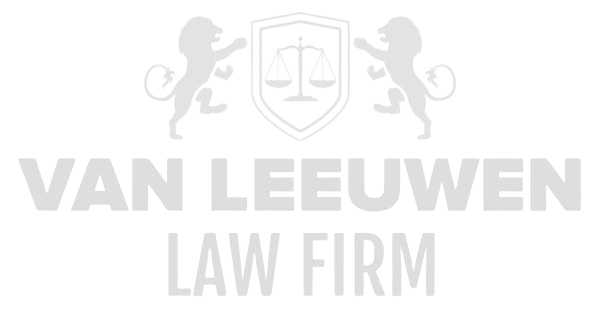Developing a business model focused solely on growth and profitability without sufficient attention to legal resilience represents a fundamental miscalculation in today’s complex business environment. The modern world, characterized by increasingly intense compliance demands and growing awareness of financial and ethical risks, no longer allows companies to operate without robust mechanisms to defend themselves against legal threats. Allegations of financial mismanagement, fraud, bribery, money laundering, corruption, or violations of international sanctions can undermine the very foundations of an organization within seconds. The risk extends beyond fines or sanctions to irreversible damage to reputation, market position, and trust-based relationships with stakeholders. In this context, it is crucial to view the business model not as a static instrument for commercial objectives but as a dynamic ecosystem in which legal compliance and integrity are embedded in the DNA.
Rethinking the business model requires a thorough and rigorous analysis of the entire value chain, carefully scrutinizing every touchpoint that may harbor potential legal risk. This ranges from contractual obligations and supplier selection criteria to internal decision-making processes and the protection of data within digital infrastructures. Legal vulnerabilities can lurk in unexpected places, and in light of the increased complexity of international regulations and sanctions law, an integrated approach that works both preventively and reactively is necessary. A robust business model stands out by its resilience not only to economic shocks but also to legal attacks—by weaving preventive mechanisms and response strategies into the core structure of the enterprise. This not only avoids unnecessary risks but also fosters a proactive culture where legal integrity is not an afterthought but a strategic asset.
Integrating Compliance and Ethics into the Business Model
Integrating compliance and ethics as fundamental pillars within the business model requires a transformation that goes beyond mere formal policy documents or minimal legal requirements. This means that anti-corruption, anti-fraud, and sanctions policies are not treated as administrative burdens but as strategic tools that protect the organization from legal harm while simultaneously making a difference in market positioning. It is about embedding a zero-tolerance culture toward illegal and unethical behavior, where all levels of the organization are aware of the seriousness and consequences of non-compliance. This requires thorough training, ongoing awareness efforts, and a clear communication structure that defines responsibilities and enforces compliance.
Embedding ethical standards at the core of the business model significantly strengthens trust among all involved parties, including customers, investors, regulators, and the broader public. Companies that can demonstrate that they view ethics and compliance not merely as risks but as opportunities to build sustainable and trustworthy relationships distinguish themselves in a market where transparency is increasingly a prerequisite for doing business. Furthermore, ethical business conduct acts as a buffer against reputational damage following public allegations of mismanagement or fraud, since consistent behavioral patterns and solid internal control mechanisms show that incidents are not the result of structural negligence.
Thorough integration of compliance and ethics also requires continuous evaluation and updating of policies, aligned with the dynamics of laws and regulations. Legal frameworks are constantly evolving, and sanctions regimes are becoming increasingly complex, especially at the international level. Companies must act not only reactively but proactively anticipate new risks by continuously conducting risk assessments and being alert to signs of integrity issues within their own organization and supply chains. This not only makes the company more resilient but also helps strengthen its reputation as a reliable and future-oriented organization.
Transparency and Accountability
Transparency and accountability are no longer optional characteristics of a well-governed company but essential conditions to maintain the trust of external stakeholders in an era where suspicions of financial mismanagement, fraud, and corruption spread quickly in public. Openness about compliance efforts, risk management, and control measures acts as a powerful buffer against reputational damage because it shows that the organization actively manages potential risks. This requires a culture of openness in which mistakes and incidents are not hidden but used as learning opportunities, and where transparency does not lead to weakening but rather to strengthening the image.
Public reporting on compliance and risks enables investors and regulators to have confidence in a company’s governance structure. This confidence often translates directly into better financing terms and reduced regulatory burdens. Organizations that cloak themselves in secrecy or treat compliance merely as a formality face a higher risk of escalations that can lead to costly investigations, sanctions, and loss of market share. Transparency, on the other hand, provides a powerful form of reputation management and can significantly mitigate the negative impact of incidents.
Accountability also extends to internal governance and leadership. It is crucial that top management and supervisory boards do not hide behind processes but take personal and public responsibility for complying with regulations and ethical standards. This increases credibility both inside and outside the organization and strengthens the position in the event of legal challenges. The level of transparency and openness is a direct indication of how seriously an organization takes its legal and ethical obligations.
Sustainability and Social Responsibility
The implementation of ESG principles (Environmental, Social, Governance) is not merely a trend but has become a fundamental necessity to minimize reputational risks in a world where social responsibility and sustainable development are central to public opinion and regulation. Organizations that fall short on sustainability face an increased risk of accusations of corruption, fraud, and other unethical practices because a lack of transparency and integrity often goes hand in hand with irresponsible environmental and social behavior. By embracing ESG as an integral part of the business model, companies not only comply with external requirements but also actively work to strengthen their social legitimacy.
Social responsibility goes beyond meeting minimal legal requirements. It implies an active contribution to sustainable development, where organizations carefully monitor and manage their impact on the environment and society. This helps reduce operational risks stemming from changing legislation, public opinion, and market expectations. Companies that position themselves as responsible social actors build a reservoir of goodwill that serves as a crucial buffer in times of crisis.
Strengthening the governance structure within the ESG framework requires an integrated approach in which ethics, transparency, and accountability are central. This includes appointing supervisors and commissioners with sustainability expertise, setting up independent control mechanisms, and integrating ESG objectives into remuneration systems. Through this strategic embedding, social responsibility becomes a powerful weapon against the risks of financial malpractice and legal liability.
Digitalization and Data Governance
Digitalization offers unprecedented opportunities for monitoring and controlling compliance risks but also brings new legal challenges, particularly in the areas of data governance and cybersecurity. In an environment where allegations of fraud and corruption can arise from manipulation of digital transactions or data breaches, it is essential to use technology to monitor risk indicators and process deviations in real time. This requires advanced analytical tools, artificial intelligence, and an integrated IT infrastructure that securely collects, analyzes, and reports all relevant data to responsible officials.
Protecting data against manipulation and cyber threats forms the first line of defense against integrity issues. Insufficiently secured systems increase the risk that sensitive information is misused for money laundering, bribery, or other illegal activities. In addition, data breaches can lead to reputational damage and legal sanctions under privacy laws, further increasing the vulnerability of the business model. Organizations must therefore adopt a holistic approach in which IT security, internal controls, and compliance are closely aligned.
Beyond technical aspects, digitalization also requires a cultural shift in which employees are aware of their role in data governance and cybersecurity. Training, clear guidelines, and incident response plans are indispensable to ensure the effectiveness of digital compliance measures. Only then can an organization protect itself against the increasingly sophisticated tactics of fraudsters and corrupt actors, ensuring business continuity remains resilient in the face of legal threats.
Stakeholder Engagement and Co-Creation
Engaging stakeholders in the revision of the business model is not merely a formality but a strategic necessity to safeguard integrity and societal legitimacy in an era where allegations of financial mismanagement, fraud, and corruption can seriously undermine the reputation and continuity of organizations. Customers, partners, suppliers, and social groups form an important ecosystem that directly influences the success and sustainability of the enterprise. By actively involving these groups in the development and execution of the business model, a shared foundation is created that strengthens trust and significantly reduces the risk of integrity breaches.
Co-creation with stakeholders means that the company no longer unilaterally determines which norms and values are guiding but instead shapes the interpretation of compliance, ethics, and risk management together. This process requires transparency and openness, where critical questions and concerns are taken seriously and serve as input for continuous improvement. In this collaboration, a synergy emerges in which different perspectives come together, leading to innovative solutions that meet high standards of integrity and social responsibility.
Furthermore, intensive stakeholder relationships encourage the early identification of potential integrity risks and an adequate response to them. By involving partners and social actors as co-owners of the compliance process, problems can be quickly detected and countered before they escalate into legal conflicts or public crises. This proactive attitude enhances the organization’s ability to operate sustainably within the increasingly complex web of regulations and societal expectations.
Innovation Focused on Compliance and Risk Mitigation
Innovation is an essential tool to strengthen the business model against legal risks, especially in sectors where fraud, bribery, and sanctions violations are frequent threats. Developing new products and services that meet strict compliance requirements not only creates a competitive advantage but also reduces exposure to legal sanctions and reputational damage. This requires the strategic integration of legal expertise into the innovation process so that new initiatives are assessed for compliance with applicable laws, regulations, and ethical standards from the design phase onwards.
In addition, technological innovations can be deployed to automate and improve compliance and risk management. Think of advanced data analytics, blockchain technology for transparent transaction recording, or artificial intelligence that detects suspicious patterns. These applications strengthen an organization’s ability to detect suspicious activities early and respond appropriately, thereby reducing the risk of escalation and legal proceedings. Innovation thus becomes a powerful instrument for building legal resilience while increasing operational efficiency.
Finally, developing compliance-oriented innovations requires a culture that encourages experimentation and learning but within clear boundaries of integrity and legal obligations. This demands close collaboration between legal teams, IT specialists, and business development so that innovations are not only technologically advanced but also robust against legal risks. In this way, innovation becomes an integral part of the company’s strategic resilience and social responsibility.
Restructuring of Partner and Supply Chains
Restructuring partner and supply chains is a crucial step in managing legal risks related to corruption, fraud, and sanctions violations. The integrity of external parties directly impacts the compliance status and reputation of the entire enterprise. Selecting partners based on strict criteria regarding ethics and regulatory compliance is therefore not a luxury but a fundamental requirement. This process includes thorough due diligence, ongoing monitoring, and the enforcement of transparency and control in every link of the chain.
By implementing systematic risk management within the supply chain, potential vulnerabilities can be identified early. This means looking not only at financial and operational aspects but also at the culture and reputation of partners, their compliance structures, and their willingness to cooperate in adhering to sanctions and anti-corruption measures. Given the complexity of international sanctions regulations, it is essential that supply chain partners also adhere to the same high standards to prevent cascading risks and liability.
Transparency plays a key role here; establishing clear agreements and monitoring compliance through audits and reports creates a climate of trust and accountability. This makes it possible to intervene as soon as signs of non-compliance appear, preventing integrity problems from multiplying and escalating into serious legal and reputational damage. A robust supply chain structure is therefore an essential component of a resilient and legally sound business model.
Cultural Change and Leadership
A sustainable transformation of the business model regarding integrity and compliance starts with cultural change and strong leadership. An organization may have the best policies and technical measures in place, but without a culture where transparency, accountability, and ethics are valued and actively demonstrated, vulnerabilities remain. Cultural change requires a long-term and deliberate effort to increase awareness and engagement among all employees, with behavioral norms and values at the core.
Leadership plays a decisive role in this. Executives and managers must not only preach integrity but also consistently demonstrate and reward it. They serve as role models and set the tone at the top. Their active involvement in compliance programs and visibility in integrity matters create an environment where employees feel responsible and safe enough to report misconduct. This prevents warning signs from going unnoticed and strengthens internal control.
Moreover, it is important that leadership focuses on facilitating open communication and lowering barriers to reporting risks and incidents. Establishing anonymous reporting systems, protecting whistleblowers, and constructively handling reports are crucial here. This fosters a culture in which compliance and integrity are not perceived as a burden but as a foundation for trust and continuity, essential in situations where legal integrity is under pressure.
Scenario Planning and Future-Oriented Governance
In a constantly changing world, where regulations, sanction systems, and societal expectations are evolving at an ever-faster pace, scenario planning is an indispensable tool for making the business model future-proof. Organizations that invest in developing different future scenarios and considering possible legal and operational risks significantly increase their resilience. This means analyzing not only current risks but also potential developments that could drastically change the compliance and integrity landscape.
Future-oriented governance is necessary to effectively integrate these scenarios into strategic decision-making and operational processes. This entails continuously evaluating and adjusting the business model, paying attention to new sanction regulations, shifting international relations, technological developments, and societal trends. Executives and supervisors must take an active role in identifying these changes and ensuring flexibility and readiness within the organization.
A robust governance model ensures that risk management is not an incident-driven activity but a continuous process of anticipation, monitoring, and adaptation. By linking scenario planning to governance practices, the organization is prepared for unforeseen legal challenges and can respond quickly and appropriately to changing circumstances. This is essential to protect and enhance reputation, market position, and societal impact over the long term.









